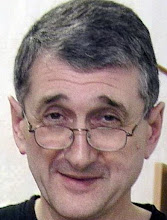For obvious reasons, I reproduce a guest editorial (by Dmitry Ushakov, director of product management at LEDAS, Novosibirsk Russia) just published by Ralph Grabowski in his u p F r o n t . e Z i n e, Issue #646. The only additional remark is that the technologies in question will be openly and in details discussed within one of the working groups in September at COFES-Russia seminar in Moscow.
"All About D-Cubed's 2D DCM" (in #645) was especially interesting, since the name of the company I work for (LEDAS) was mentioned. In answering upFront.eZine's question about competitors, D-Cubed's Dr Howarth said that "For the DCM geometric constraint solving components, LEDAS, based in Russia, is a relatively recent entrant". May I make a correction?
LEDAS Ltd. was established eleven years ago -- in 1999. Seven years ago, we began selling our technology component LGS 2D, a direct competitor of D-Cubed's 2D DCM. Our component is designed to support parametric sketching/drawing in 2D/3D CAD/CAM/CAE applications. Since then, a dozen software companies have licensed LGS 2D, as well as our 3D version, LGS 3D (our component that is a competitor of D-Cube's 3D DCM), and embedded them successfully into their applications. So, while we are ten years younger than D-Cubed, we are not new.
From our point of view, the primary difference between us is that D-Cubed is a part of a big vendor, Siemens PLM Systems; we are independent. Siemens PLM Systems competes in the CAD/CAM applications market against other companies who license D-Cubed's components. Do these companies receive the same level of technical support and functionality as do divisions inside Siemens? For example, are any competitors able to license Siemens' synchronous technology? This is not a question that our customers need to ask, for all of our technologies are completely available to them, because we do not compete with our customers.
We are aware of Dr. Owen (founder of D-Cubed) and his remarkable contribution to the field of geometric constraint solving. At the same time, it is worthwhile mentioning the contributions of other researchers. Among them are Prof. Hoffmann from Purdue University (USA), Prof. Michelucci from Université de Bourgogne (France), and Prof. Clement from Dassault Systemes (France), as well as other pioneer researchers whose work on solving geometric constraints go as far back as 1975.
Constraints Solved to the Users' Satisfaction
Whereas algorithmic issues have been elaborated enough during the last thirty years, there are just a few commercial geometric constraint solvers on the market. In my opinion, it is not enough to only solve the constraint satisfaction problem. What is also needed is a way to find a solution that best corresponds to the expectations of end-users -- this is called natural behavior, and sometimes depends on the subjective opinions of users. The maturity of a particular commercial technology for constraint solving is based on continuous improvement in the quality of its solving procedure. This process is driven by requests from customers who use the solver in different contexts.
LEDAS also does research in constraint solving. It seems that our team is somewhat similar in its scientific and technical background to the one Dr Howarth works with; in particular, about half of our developers have their Ph.D.s and many others have a good chance to receiving it. This brain power is necessary, because the development of CAD components combines strong mathematical, computer science, and software engineering know-how. We actively collaborate with universities, such as the ongoing research at Purdue University (USA) in the field of CAD user interfaces. Together, we are improving constraint-driven freehand sketching, which is the key to building robust sketch-aware systems and sketch-based interfaces for future CAD systems.
Some customers who license our technology are not only traditional CAD vendors (Tecnos G.A. and CD-adapco), but also firms who embed our LGS 3D component into custom CAD systems. Joe Gibbs Racing of NASCAR, for example, is using our software to assemble suspension parts onto the chassis. Other customers prefer to exploit our mathematically-skilled team to develop proprietary key components, such as for CATIA V5, which has been on the market now for several years.
Last year, we collaborated with Open Design Alliance, a non-profit consortium of over 2,000 software developers, to integrate our LGS 2D geometric constraint solver into their Teigha platform, and is fully compatible with the DWG 2010 file format. Now our solver is available to ODA members who require constraint support for their applications.
Constraint Technology for the Future
One of Dr. Howarth's interesting points is regarding the future direction for geometric constraint solvers. We share his vision of increasing the use of 3D solvers as the engine for a new generation of direct modelers. For us, this is an important field of research. As direct modelers become more popular, the question becomes how to keep design intent in a history-free environment. To answer the question, LEDAS is now developing our "variational direct modeling" (VDM) technology.
(VDM allows users to intelligently modify any parameter in a direct modeling system, while design intent is automatically recognized by our engine and expressed as a set of geometric and engineering constraints. We have developed a plug-in for McNeel & Associates' Rhinoceros direct modeling software, which allows anyone to evaluate our VDM technology.)
I trust that this addition to the Dr. Howarth interview is useful for readers of upFront.eZine, and I am available to answer further questions at ushakov@ledas.com."
[Dmitry Ushakov is director of product management at LEDAS, Novosibirsk Russia.]
http://www.ledas.com/

No comments:
Post a Comment